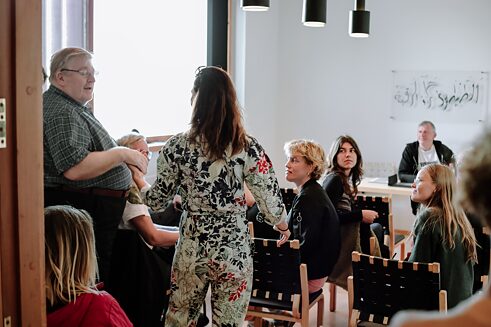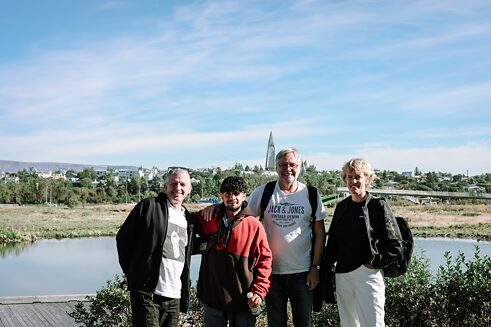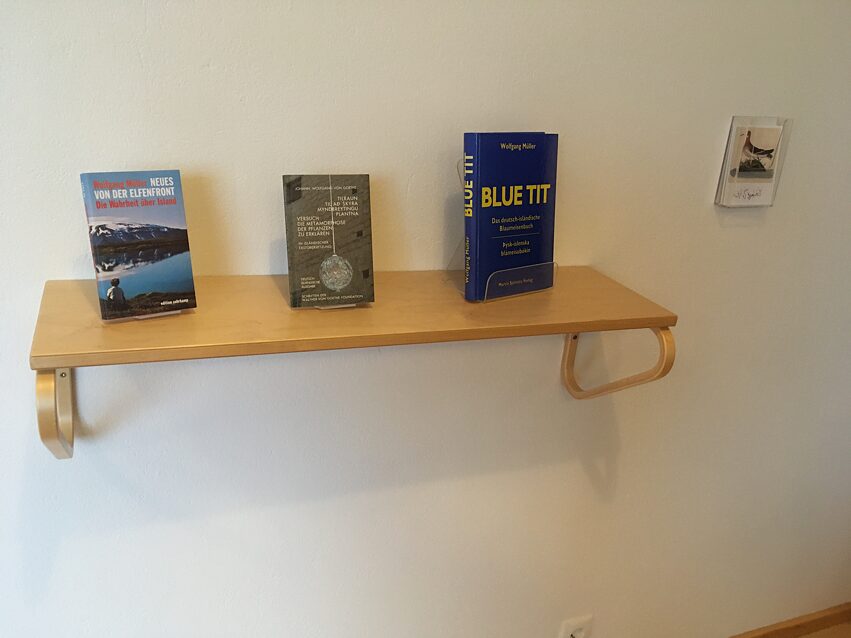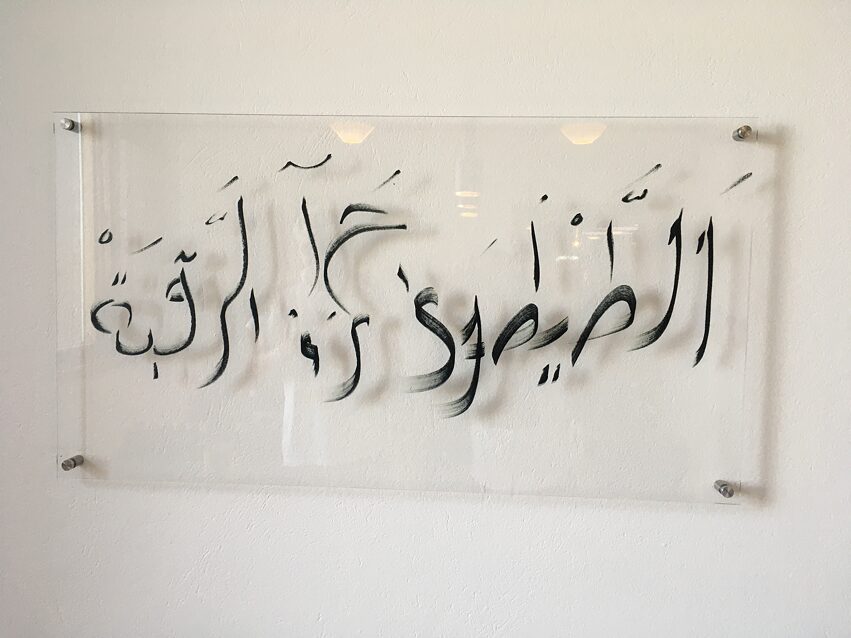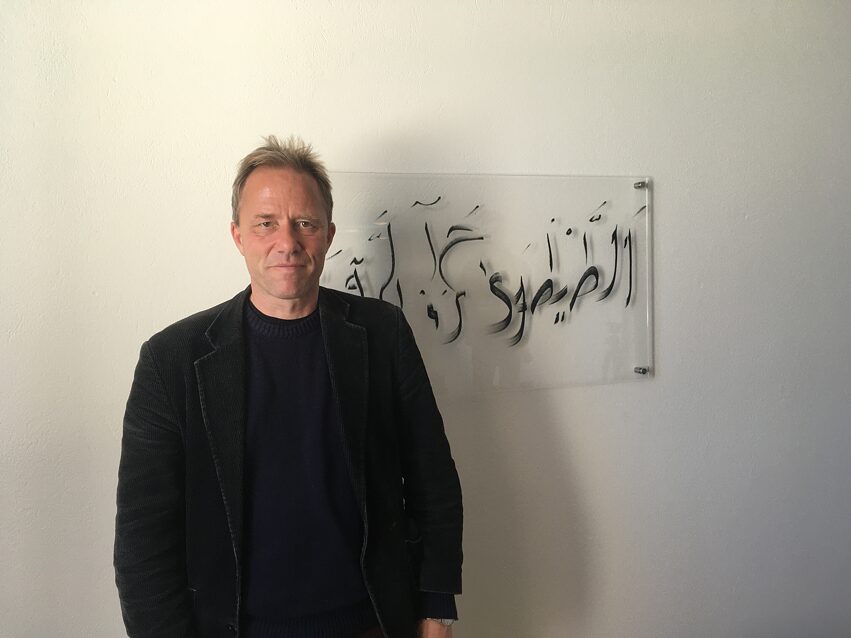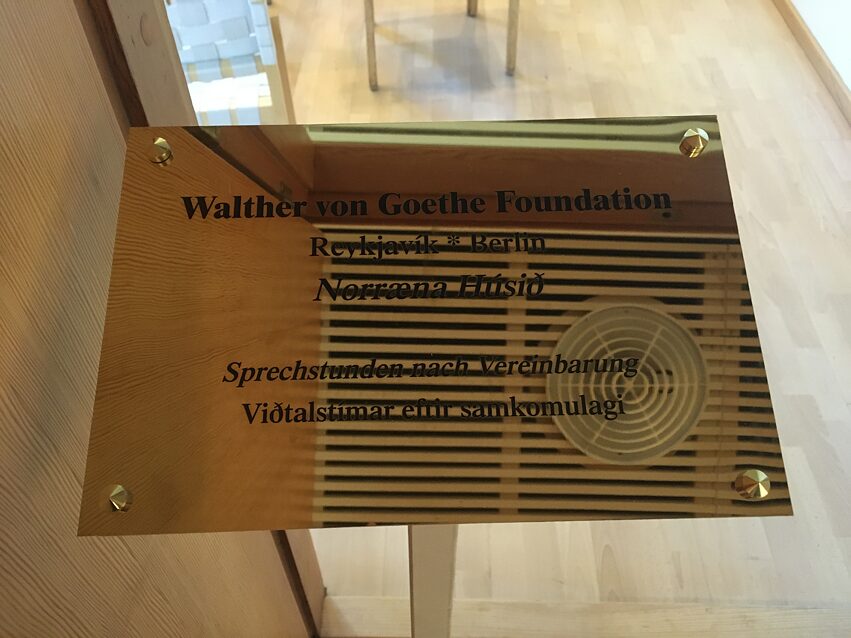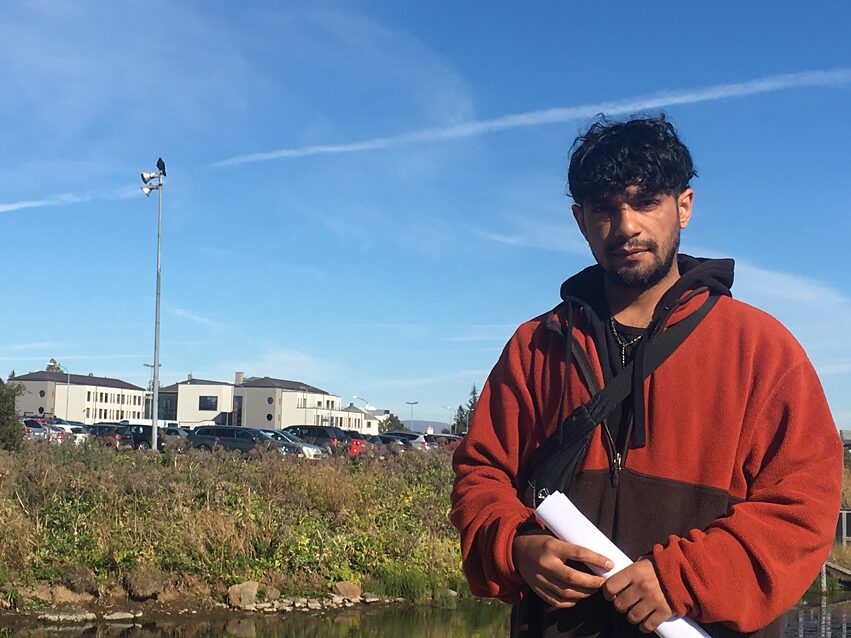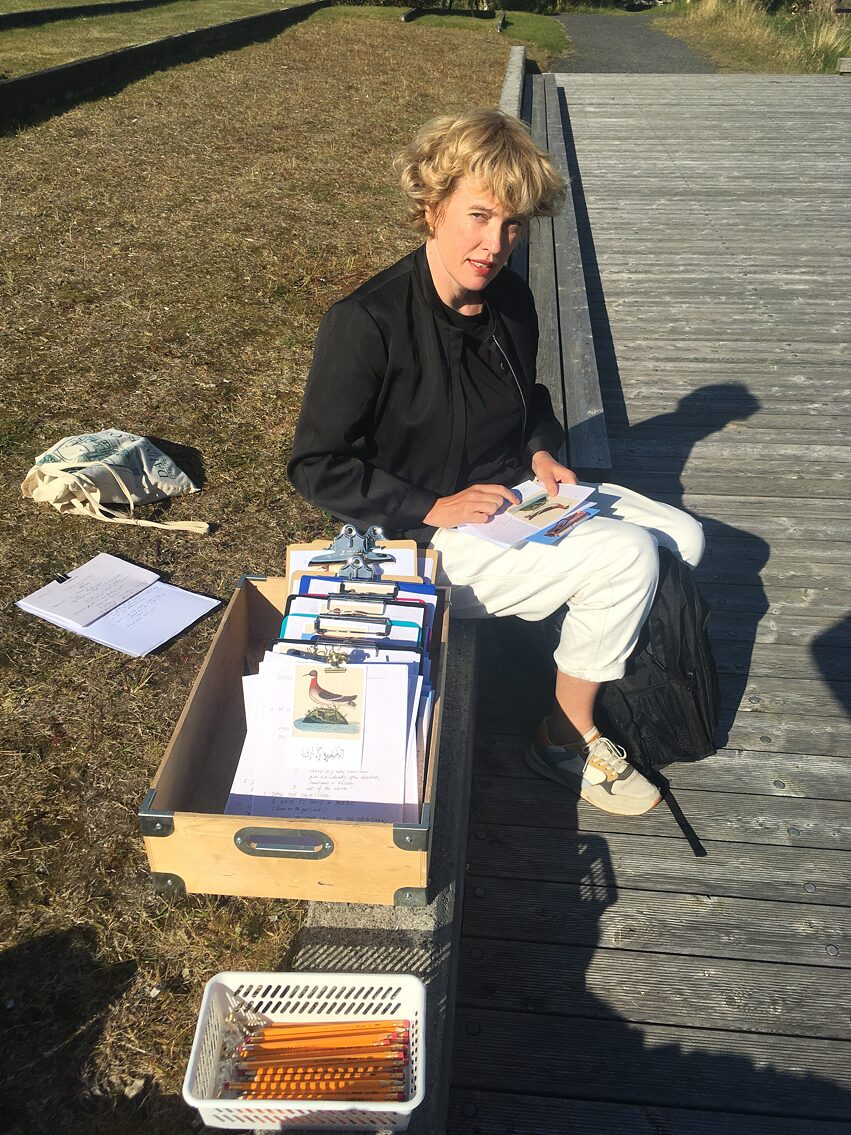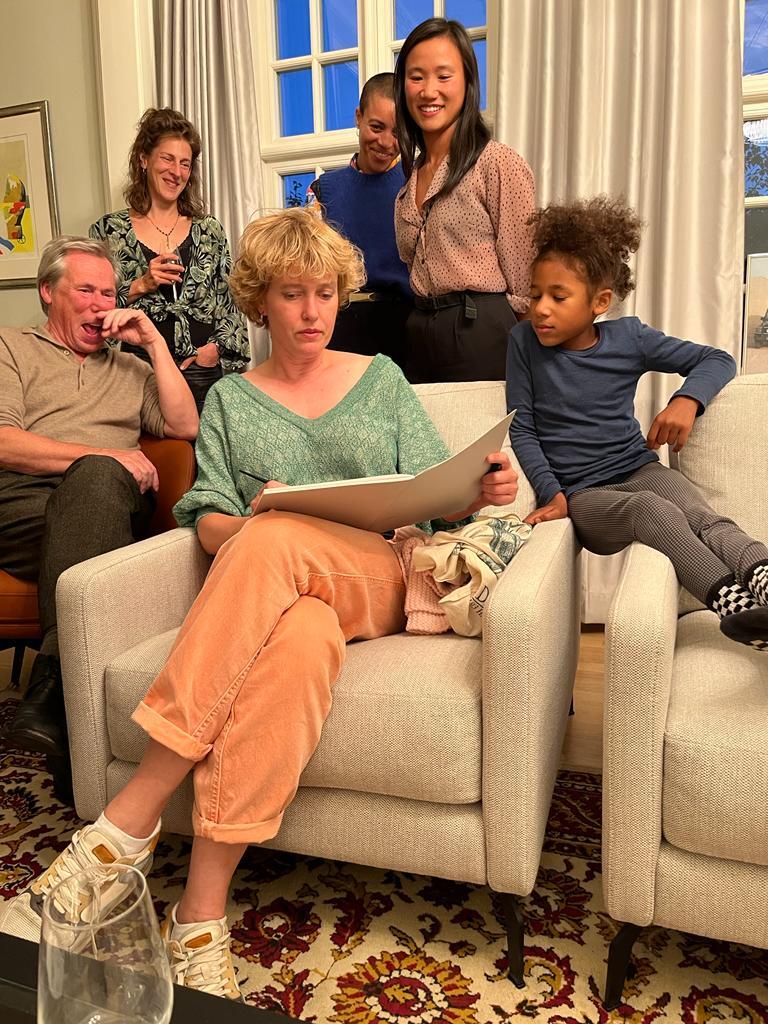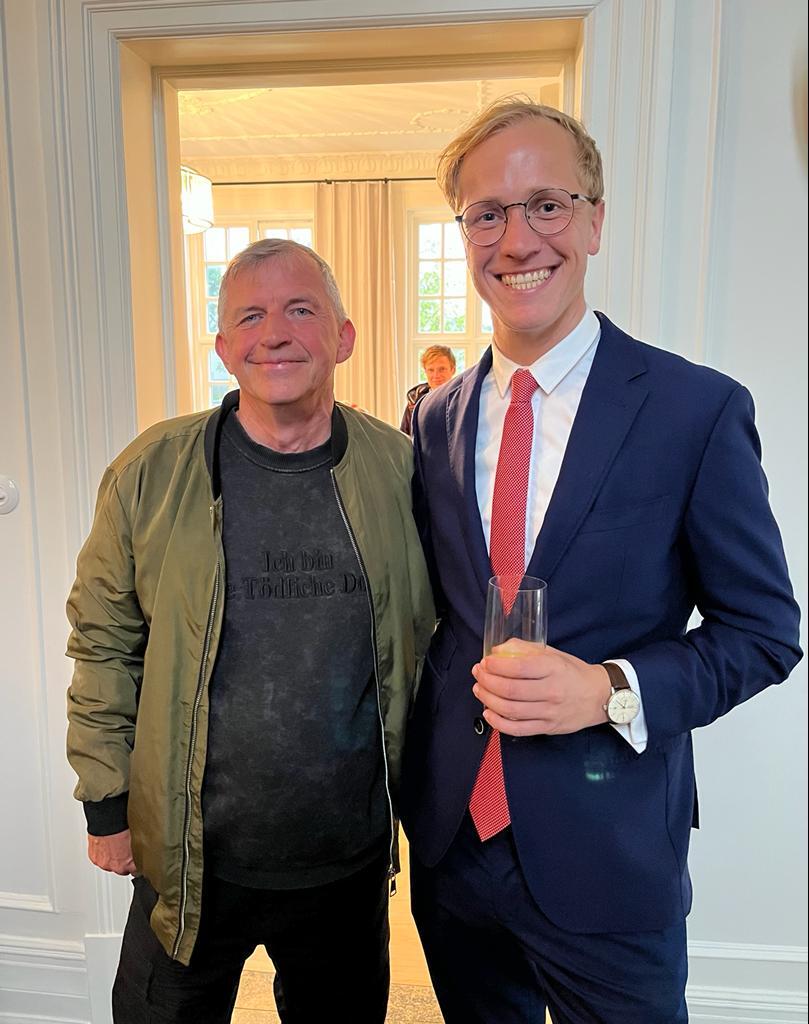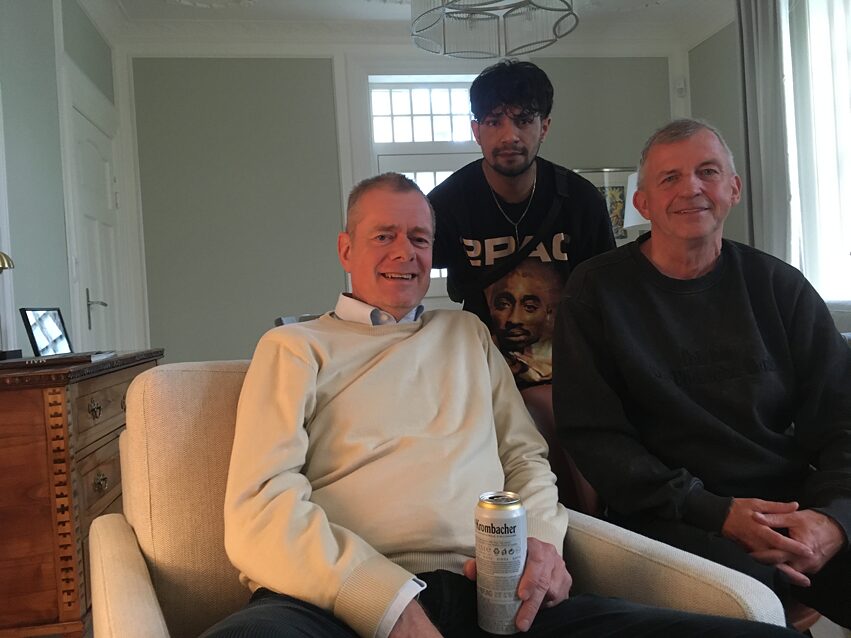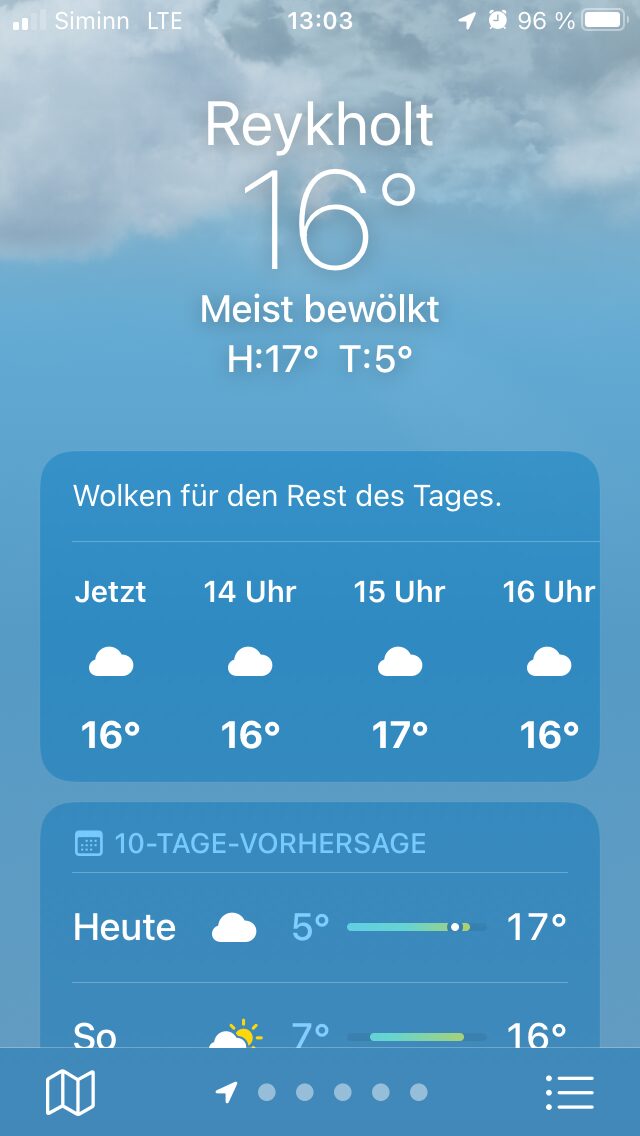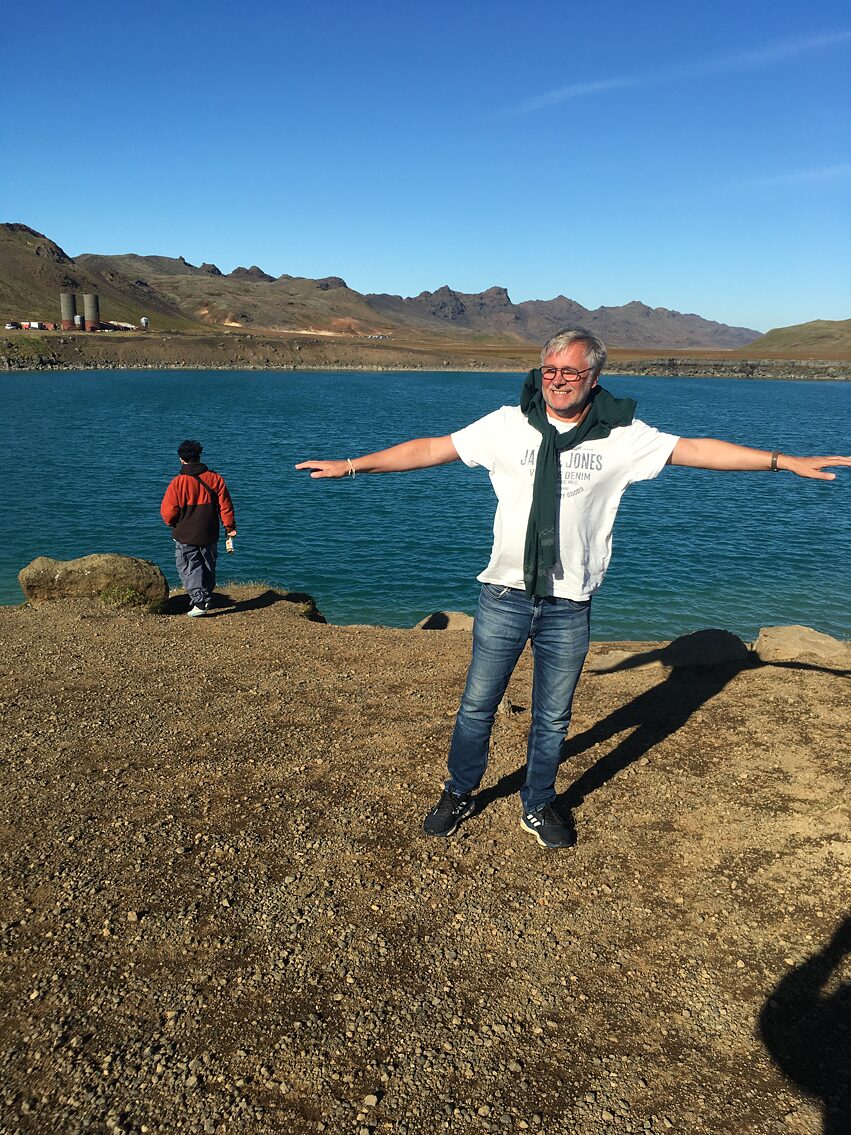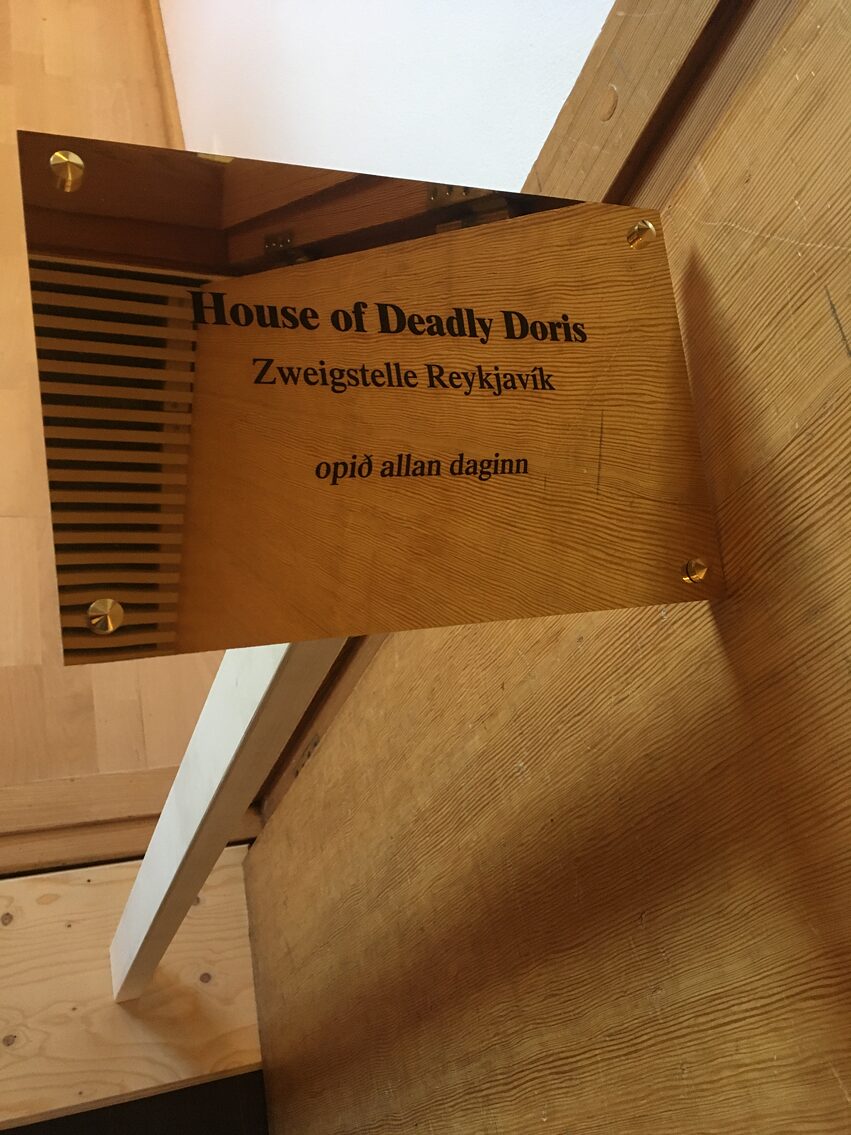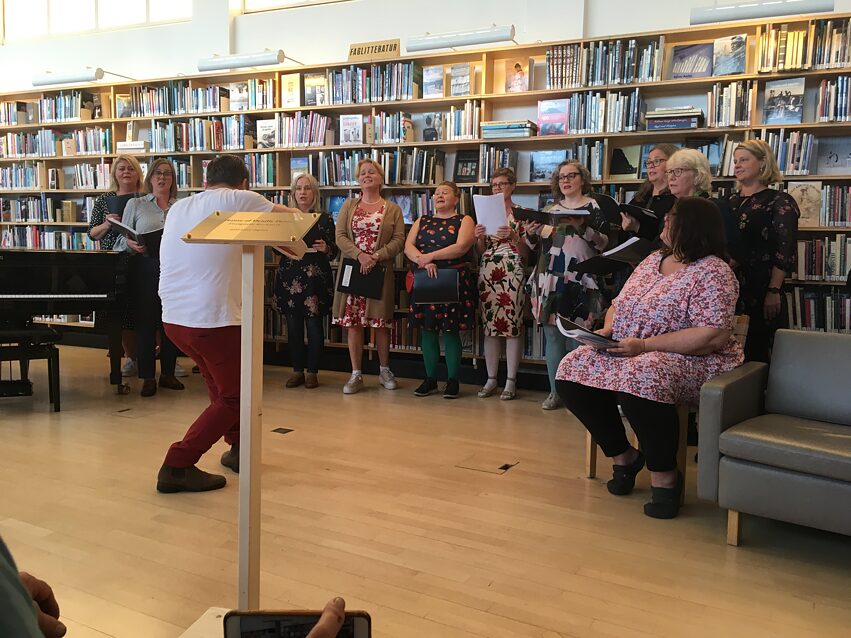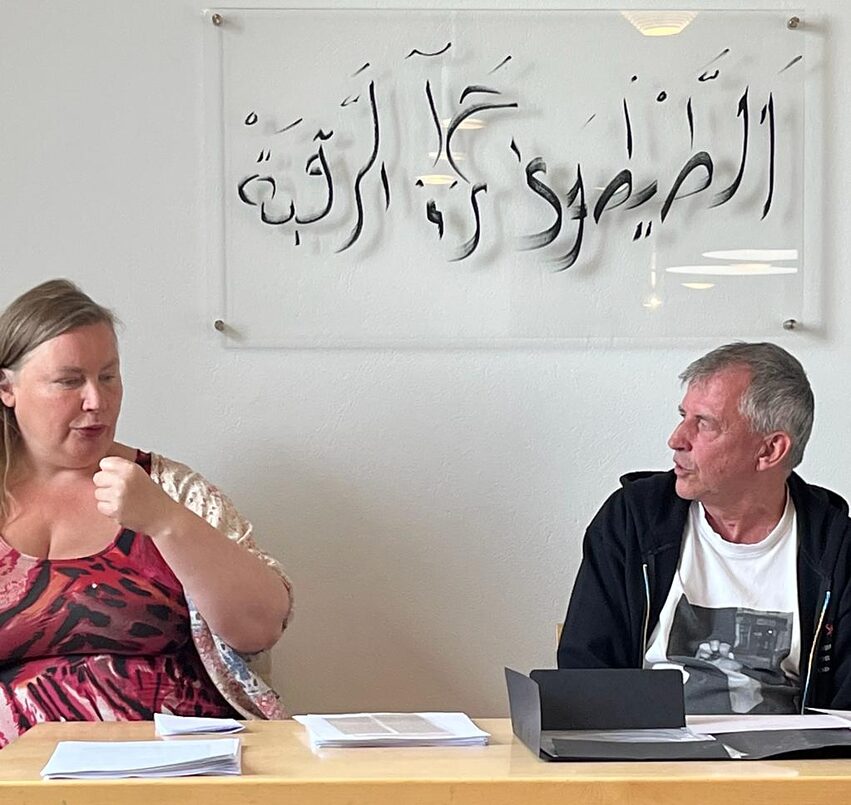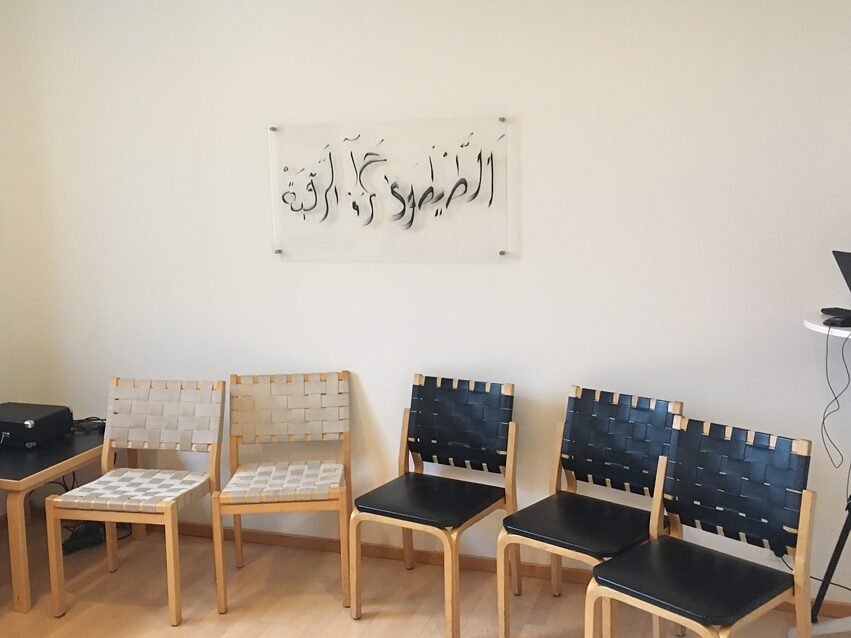Q&A with Wolfgang Müller
Misunderstanding as a Performative Element
Wolfgang Müller is an artist and founder of the Walther von Goethe Foundation. Misunderstandings are a recurring theme in Wolfgang’s work and a solid starting point for a good many projects. The Walther von Goethe Foundation along with the House of the Deadly Doris with Ahmad Hamad and Dr. An Paenhuysen created a space of archived knowledge—providing insight into conversations around topics of migration and nationalities, dubbing, and the reenactment of lost dances and lost birds.
At the Goethe Morph* Iceland event 'The Lost Icelandic Folk Dance', curator Thomas Schaupp and Berglind Ágústsdóttir took it upon themselves to perform the reenactment of a lost dance (picture above) and pretty soon this brought other members of the audience into the discussion. A few more dances were called for and Arnbjörg María Danielsen along with other audiences showed examples of Icelandic folk dances—the lecture becoming a participatory performance. The following day, Ahmad Hamad led the workshop “What nationality do birds have?” as part of the various interventions by Walther von Goethe Foundation at the Nordic House, addressing questions of migration, belonging, and nationalities. Sóley Frostadottir asked Wolfgang Müller on these different interventions, his understanding of performances and the potential of misunderstanding and speculation.
From the beginning of our life, we constantly encounter misunderstandings. It starts as a baby, when we cry and the parents wonder if we're hungry, flatulent or bored. I have found that the best way to clarify or recognize the misunderstandings I encounter or fall victim to is in the field of art. But since everyone is creative anyway and has their own handwriting, and since most people primarily associate these qualities with art, I didn't want to call myself an artist for a long time. Also, the word artist sounds so conceited. Today I'm 64 years old and I think it's okay when I'm called an artist. But I also describe myself as a misunderstanding scientist and as President of the Walther von Goethe Foundation, which originally arose out of a misunderstanding.
The Walther von Goethe Foundation is initially the result of a metamorphosis of the “private Goethe Institute Reykjavik”. I founded this together with Ásta Ólafsdóttir in Nýlisasafnið in Reykjavík in August 1998 after the state-run Goethe-Institut Reykjavík had closed in March. Three years later, in March 2001, the legal department of the Goethe-Institut headquarters in Munich understood my performative action as the founding of a competing institution. She saw her copyright in danger. So in 2001 I changed the name of my performance to "Walther von Goethe Foundation" and appointed myself President of the Foundation. Walther was grandson of Johann Wolfgang von Goethe and is the last descendant of the Goethe family.
A performance is usually an action with a precise time limit. But my performances can also take place indefinitely and the actions in them change indefinitely. In addition to the performative installation of an institution, a book can also be published and many other undetermined things. For example, as President of the Walther von Goethe Foundation in 2001, I asked the Germanist and Icelandic lecturer at the HU Berlin Jón Atlason if he could translate Goethe's "Attempt to Explain the Metamorphosis of Plants" from 1790 into Icelandic. Goethe's first scientific essay had never before been published in Icelandic. Jón was looking for a new job and I was a professor at the HfBK in Hamburg at the time and had the financial means to finance the translation and printing of the book. A translation is also a performative action. The original German text by Goethe is transformed into the Icelandic language in the translator's mind. The performance itself is therefore invisible and takes place in the translator's head.
Before the young have hatched, the female birds have already flown south to the Saudi and West African coasts. The male birds follow them with the young a few weeks later. There, both sexes change their feather colors and can hardly be distinguished from each other. The phalarope is a wonderful example of metamorphosis and migration. Is it an Arabian, African or Icelandic bird? Because the question is not easy to answer, many new forms emerge and wonderful misunderstandings become visible.
All formation of form is reconstruction. When scientists have described a bird that is now extinct, we depend on the picture they drew of that animal. Often there is only one description from a single eyewitness, it would be better if there were as many descriptions as possible. Due to the diversity of these, the image becomes blurry and clearer at the same time. Because only the sum of the different perceptions brings more clarity; it is similar to the extinct Icelandic ring dance, which is only attested by a few texts in old books and by the survival of a similar dance in the Faroe Islands. My attempt to reconstruct it through the courtship dance and gyroscope swimming of the Phalaropus is of course speculative. But sometimes speculation turns into reality, as the writer Jules Verne proved.
During the event series of Goethe Morph* Iceland in September 2022 at Nordic House Reykjavík, the team of Walther von Goethe Foundation and The House of Deadly Doris gathered in Reykjavík. During that time, artist Wolfgang Müller documented their experiences in a photo diary.
 Artist Wolfgang Müller | © Jan Rickers
Who are you and what is your practice?
Artist Wolfgang Müller | © Jan Rickers
Who are you and what is your practice?
From the beginning of our life, we constantly encounter misunderstandings. It starts as a baby, when we cry and the parents wonder if we're hungry, flatulent or bored. I have found that the best way to clarify or recognize the misunderstandings I encounter or fall victim to is in the field of art. But since everyone is creative anyway and has their own handwriting, and since most people primarily associate these qualities with art, I didn't want to call myself an artist for a long time. Also, the word artist sounds so conceited. Today I'm 64 years old and I think it's okay when I'm called an artist. But I also describe myself as a misunderstanding scientist and as President of the Walther von Goethe Foundation, which originally arose out of a misunderstanding.
Is the foundation of the Walther von Goethe Institut a performance in itself?
The Walther von Goethe Foundation is initially the result of a metamorphosis of the “private Goethe Institute Reykjavik”. I founded this together with Ásta Ólafsdóttir in Nýlisasafnið in Reykjavík in August 1998 after the state-run Goethe-Institut Reykjavík had closed in March. Three years later, in March 2001, the legal department of the Goethe-Institut headquarters in Munich understood my performative action as the founding of a competing institution. She saw her copyright in danger. So in 2001 I changed the name of my performance to "Walther von Goethe Foundation" and appointed myself President of the Foundation. Walther was grandson of Johann Wolfgang von Goethe and is the last descendant of the Goethe family.A performance is usually an action with a precise time limit. But my performances can also take place indefinitely and the actions in them change indefinitely. In addition to the performative installation of an institution, a book can also be published and many other undetermined things. For example, as President of the Walther von Goethe Foundation in 2001, I asked the Germanist and Icelandic lecturer at the HU Berlin Jón Atlason if he could translate Goethe's "Attempt to Explain the Metamorphosis of Plants" from 1790 into Icelandic. Goethe's first scientific essay had never before been published in Icelandic. Jón was looking for a new job and I was a professor at the HfBK in Hamburg at the time and had the financial means to finance the translation and printing of the book. A translation is also a performative action. The original German text by Goethe is transformed into the Icelandic language in the translator's mind. The performance itself is therefore invisible and takes place in the translator's head.
What can we learn from birds in relation to morphing and migration?
In 2017 I accidentally met Ahmad Hamad in Berlin. He fled the war in Syria. We shared a common interest in birds and we became friends. In Damascus, Ahmad kept parrots and canaries in his room, and also liked to watch birds in the wild. I told him about Phalaropus lobatus, to which I dedicate a chapter in my 2007 book "News from the Fairy Front - The Truth About Iceland". I had the title of the chapter about Phalaropus translated into Arabic script. Literally, the bird means something like "red-breasted sandpiper" in Arabic. Phalaropus lobatus lives in Iceland for a few months, where only the males incubate the eggs.Before the young have hatched, the female birds have already flown south to the Saudi and West African coasts. The male birds follow them with the young a few weeks later. There, both sexes change their feather colors and can hardly be distinguished from each other. The phalarope is a wonderful example of metamorphosis and migration. Is it an Arabian, African or Icelandic bird? Because the question is not easy to answer, many new forms emerge and wonderful misunderstandings become visible.
Is there a common thread between the reenactment of lost dance and the reenactment of extinct birds? I am curious to hear what it is that you find compelling about reenactments?
All formation of form is reconstruction. When scientists have described a bird that is now extinct, we depend on the picture they drew of that animal. Often there is only one description from a single eyewitness, it would be better if there were as many descriptions as possible. Due to the diversity of these, the image becomes blurry and clearer at the same time. Because only the sum of the different perceptions brings more clarity; it is similar to the extinct Icelandic ring dance, which is only attested by a few texts in old books and by the survival of a similar dance in the Faroe Islands. My attempt to reconstruct it through the courtship dance and gyroscope swimming of the Phalaropus is of course speculative. But sometimes speculation turns into reality, as the writer Jules Verne proved.Photo Diary of Goethe Morph* Iceland by Wolfgang Müller
During the event series of Goethe Morph* Iceland in September 2022 at Nordic House Reykjavík, the team of Walther von Goethe Foundation and The House of Deadly Doris gathered in Reykjavík. During that time, artist Wolfgang Müller documented their experiences in a photo diary.



